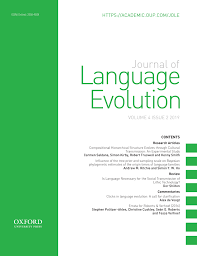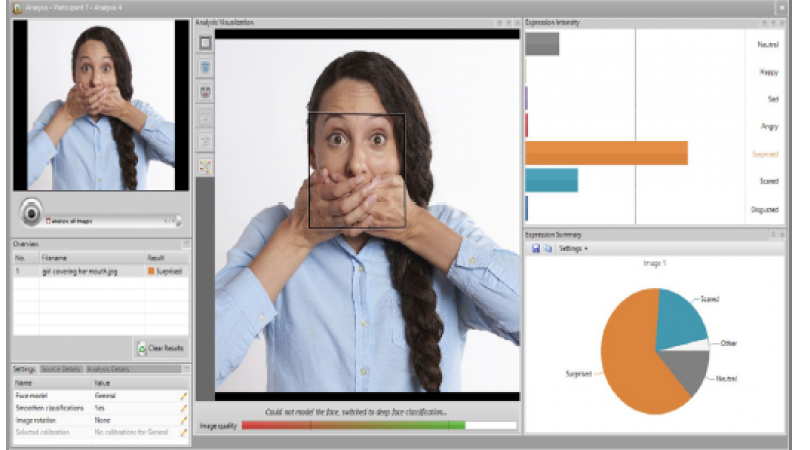【永久资源,期刊全文】Journal of Language Evolution《语言演化杂志》2016-2019年论文集-共67篇论文
2375 阅读 35 下载 2020-06-24 14:29:39 上传 24.31 MB
本期推送的是国际新兴期刊——Journal of Language Evolution《语言演化杂志》创刊迄今的所有论文,即2016-2019年第1-4卷共67篇论文(暂缺2篇),其中目录可在正文中查看,全文可以点击文末附件列表
Journal of Language Evolution《语言演化杂志》2016-2019年论文集-共67篇论文
资料整理:张明辉(微信:zhangxiaojian160408)

| 卷名 | 期号 | 论文号 | 论文题目 |
| Vol. 1 | Issue 1 | Article 01 | Language evolution needs its own journal |
| Vol. 1 | Issue 1 | Article 02 | How to analyze linguistic change using mixed models, Growth Curve Analysis and Generalized Additive Modeling |
| Vol. 1 | Issue 1 | Article 03 | Linguistic diversity and language evolution |
| Vol. 1 | Issue 1 | Article 04 | Overview: Debating the effect of environment on language |
| Vol. 1 | Issue 1 | Article 05 | Language evolution and climate: the case of desiccation and tone |
| Vol. 1 | Issue 1 | Article 06 | Commentary: The role of language contact in creating correlations between humidity and tone |
| Vol. 1 | Issue 1 | Article 07 | Commentary: Defining and assessing constraints on linguistic forms |
| Vol. 1 | Issue 1 | Article 08 | Commentary: Is the effect of desiccation large enough? |
| Vol. 1 | Issue 1 | Article 09 | Commentary: Culture mediates the effects of humidity on language |
| Vol. 1 | Issue 1 | Article 10 | Commentary: Considering language as expressive culture |
| Vol. 1 | Issue 1 | Article 11 | Commentary: Tonal complexity in non-tonal languages |
| Vol. 1 | Issue 1 | Article 12 | Commentary: There is no demonstrable effect of desiccation |
| Vol. 1 | Issue 1 | Article 13 | Commentary: Tone languages and laryngeal precision |
| Vol. 1 | Issue 1 | Article 14 | Commentary: Issues of time, tone, roots and replicability |
| Vol. 1 | Issue 1 | Article 15 | Commentary: Beyond tone and climate: broadening the framework |
| Vol. 1 | Issue 1 | Article 16 | Commentary: Desiccation and tone within linguistic theory and language contact research |
| Vol. 1 | Issue 1 | Article 17 | Response: Climate and language: has the discourse shifted? |
| Vol. 1 | Issue 1 | Article 18 | Speaking Our Minds: Why human communication is different, and how language evolved to make it special , by Thom Scott-Phillips |
| Vol. 1 | Issue 2 | Article 19 | The typology and diachrony of higher numerals in Indo-European: a phylogenetic comparative study |
| Vol. 1 | Issue 2 | Article 20 | Measuring conventionalization in the manual modality |
| Vol. 1 | Issue 2 | Article 21 | Beyond cognacy: historical relations between words and their implication for phylogenetic reconstruction |
| Vol. 1 | Issue 2 | Article 22 | The emergence of word order and morphology in compositional languages via multigenerational signaling games |
| Vol. 1 | Issue 2 | Article 23 | Quantifying ocular morphologies in extant primates for reliable interspecific comparisons |
| Vol. 1 | Issue 2 | Article 24 | Conference Report on Evolang 11 |
| Vol. 1 | Issue 2 | Article 25 | Double-blind reviewing at EvoLang 11 reveals gender bias |
| Vol. 1 | Issue 2 | Article 26 | Evolutionary Syntax , by Ljiljana Progovac |
| Vol. 2 | Issue 1 | Article 27 | Introduction to the special issue on the emergence of sound systems |
| Vol. 2 | Issue 1 | Article 28 | Measuring rhythmic complexity: A primer to quantify and compare temporal structure in speech, movement, and animal vocalizations |
| Vol. 2 | Issue 1 | Article 29 | Divergent acoustic properties of gelada and baboon vocalizations and their implications for the evolution of human speech |
| Vol. 2 | Issue 1 | Article 30 | Anatomical biasing and clicks: Evidence from biomechanical modeling |
| Vol. 2 | Issue 1 | Article 31 | Phoneme inventory size and the transition from monoplanar to dually patterned speech |
| Vol. 2 | Issue 1 | Article 32 | What phoneme networks tell us about the age of language families |
| Vol. 2 | Issue 1 | Article 33 | Category competition as a driver of category contrast |
| Vol. 2 | Issue 1 | Article 34 | Structure and abstraction in phonetic computation: Learning to generalise among concurrent acquisition problems |
| Vol. 2 | Issue 2 | Article 35 | Michael Studdert-Kennedy (1927–2017) |
| Vol. 2 | Issue 2 | Article 36 | In the beginning: A review of Robert C. Berwick and Noam Chomsky’s Why Only Us |
| Vol. 2 | Issue 2 | Article 37 | Gorillas may use their laryngeal air sacs for whinny-type vocalizations and male display |
| Vol. 2 | Issue 2 | Article 38 | Infinitely productive language can arise from chance under communicative pressure |
| Vol. 2 | Issue 2 | Article 39 | Usage context influences the evolution of overspecification in iterated learning |
| Vol. 2 | Issue 2 | Article 40 | The emergence of linguistic structure in an online iterated learning task |
| Vol. 2 | Issue 2 | Article 41 | Language for $200: success in the environment influences grammatical alignment |
| Vol. 2 | Issue 2 | Article 42 | Rethinking the relationship between pronoun-drop and individualism with Bayesian multilevel models |
| Vol. 3 | Issue 1 | Article 43 | Scala naturae: the impact of historical values on current ‘evolution of language’ discourse |
| Vol. 3 | Issue 1 | Article 44 | A statistical model for the joint inference of vertical stability and horizontal diffusibility of typological features |
| Vol. 3 | Issue 1 | Article 45 | The role of pantomime in gestural language evolution, its cognitive bases and an alternative |
| Vol. 3 | Issue 1 | Article 46 | In support of the role of pantomime in language evolution |
| Vol. 3 | Issue 1 | Article 47 | Different kinds of parsimony: association-learning versus bodily mimesis |
| Vol. 3 | Issue 1 | Article 48 | Ancient DNA and language evolution: a special section |
| Vol. 3 | Issue 1 | Article 49 | The genomic landscape of language: Insights into evolution |
| Vol. 3 | Issue 1 | Article 50 | What aDNA can (and cannot) tell us about the emergence of language and speech |
| Vol. 3 | Issue 1 | Article 51 | SRGAP2 and the gradual evolution of the modern human language faculty |
| Vol. 3 | Issue 1 | Article 52 | Of Tongues and Men: A Review of Morphological Evidence for the Evolution of Language |
| Vol. 3 | Issue 2 | Article 53 | What smartphone apps may contribute to language evolution research |
| Vol. 3 | Issue 2 | Article 54 | Studying language evolution in the age of big data |
| Vol. 3 | Issue 2 | Article 55 | Sequence comparison in computational historical linguistics |
| Vol. 3 | Issue 2 | Article 56 | Bayesian phylolinguistics reveals the internal structure of the Transeurasian family |
| Vol. 4 | Issue 1 | Article 57 | Social Group Effects on the Emergence of Communicative Conventions and Language Complexity |
| Vol. 4 | Issue 1 | Article 58 | Socio-ecological resilience and language dynamics: An adaptive cycle model of long-term language change |
| Vol. 4 | Issue 1 | Article 59 | The emergence of verse templates through iterated learning |
| Vol. 4 | Issue 1 | Article 60 | Adults are more efficient in creating and transmitting novel signalling systems than children |
| Vol. 4 | Issue 1 | Article 61 | When the Bough Breaks: A Contribution to Falk’s Hypothesis |
| Vol. 4 | Issue 1 | Article 62 | Language in Our Brain: The Origins of a Uniquely Human Capacity, by Angela D. Friederici |
| Vol. 4 | Issue 2 | Article 63 | Compositional Hierarchical Structure Evolves through Cultural Transmission: An Experimental Study |
| Vol. 4 | Issue 2 | Article 64 | Influence of the tree prior and sampling scale on Bayesian phylogenetic estimates of the origin times of language families |
| Vol. 4 | Issue 2 | Article 65 | Is Language Necessary for the Social Transmission of Lithic Technology? |
| Vol. 4 | Issue 2 | Article 66 | Clicks in language evolution: A call for clarification |
| Vol. 4 | Issue 2 | Article 67 | Errata for Roberts & Verhoef (2016) |
所需积分:0 分
限期开放已结束
表情
图片
附件















